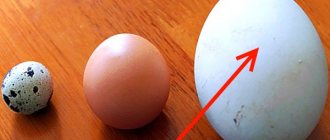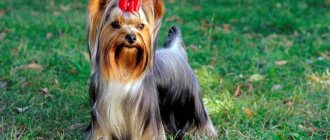Horse harness bears the load of the crew, so its correct selection and fit is very important for maintaining the health and performance of the horse. The harness consists of leather straps designed to distribute the load evenly. A harness is a fastening and traction system for a carriage, and equipment for riding horses is usually called a harness. The harness straps of a horse-drawn horse must be strong and soft.
Previously, no expense was spared on horse harnesses. As a rule, the production of harnesses was carried out according to individual orders, so the belts were ideally adjusted to a specific animal. Nowadays you can buy ready-made harness, but most often it turns out that not all parts fit the horse. People who work with horses prefer to buy all their parts from different places. The kit consists of a list of standard elements, which are listed below. Only the leather parts should be attached to the horse's body.
Basic set of harness for carriage and riding
What is horse harness
For a comfortable ride and convenient control, special devices for horses have been invented. Some of them help the horse cope better with the load. A set of such devices is called harness or ammunition. This equipment is intended for riding or working a horse in a harness.
The harness has been known since at least the 2nd century BC. The status of the animal's owner was recognized by its quality and design. Although, as a rule, ammunition was required only for convenience in work. Around the middle of the 16th century, beautiful horse harnesses became a fashionable attribute.
The equipment must be suitable for the specific horse. In the past, equipment was often made to order. Today in stores there is a choice for every taste.
History of appearance
The first mentions of horse harnesses have been known since ancient times.
Previously, when a person’s social position was more important than it is now, it had to be emphasized by decorating the harness. In the Middle Ages, this trend changed; horse owners began to pay more attention to functionality.
After the 16th century, due to the advent of open carriages and various carriages, the fashion for beautiful horse harnesses returned. At such times, wealthy horse breeders preferred flamboyance and frills to the functional characteristics of a team of horses.
When people say “horse harness,” they assume that the device is a system of straps and pieces of wood that are placed on a horse and serve as a way to make it easier for the animal to carry loads. Harness can be varied, according to different types of horse harnesses.
The first harness appeared about 5.5 thousand years ago on the lands of present-day Kazakhstan in those places where the first human attempts were made to tame steppe horses. The evidence is provided by parts of primitive equipment found in these places - even then man began to think about how to domesticate this animal and use its power to help in hunting and everyday life.
The earliest well-preserved parts of the harness were found in Altai, where the Pazyryk culture existed during the Iron Age. In those days, amazingly beautiful harnesses were made with felt and leather elements, decorated with preserved metal elements. Harnesses were made by craftsmen who kept their secrets and passed them on only to descendants or close disciples.
What does horse harness consist of?
To transport goods and people in carts, a team is used. The set of harnesses is not always the same. Some parts are taken constantly, others only in certain cases. The composition of the harness depends on the purpose and method of harnessing.
Horse harness includes the following devices:
- Bridle. It consists of several elements - belts, usually leather. One goes below the chin. The headband consists of an occipital strap and one that runs in front of the ears. The harness, as a separate element or part of the bridle, includes a bit. This is a rod (gnawed) with rings on the sides. It is inserted into the edges of the mouth - where there are no teeth. The bit puts pressure on the tongue, lips, jaw and serves for control. The snaffle is often made of metal.
- Clamp . Connects horse and cart, transmits force and absorbs shock. It consists of two halves connected at the top - pliers, usually wooden. The bottom is tied with soup. There is a special lining under the clamp. The whole thing weighs 6–9 kg.
- A harness is a set of belts that secures the collar during sudden movements, for example, when stopping. A circular belt is placed on the horse's body. It is connected to pincers. The back strap is attached along the body, the side ones are located in the shaft area. Transverse and slope insure the main body belts.
- Shafts. These are guides - two thin sticks or tubes on the sides. They connect the cart and the clamp and transmit force. One shaft is called a drawbar; it is placed between the horses.
- Arc . Connects the shafts and the clamp. Softens the ride and prevents ticks from putting too much pressure on the animal’s neck.
- Gouges are belt loops. They are located near the arc and also combine shafts and a clamp.
- Saddle. This element of the horse harness secures the shafts and arc. Removes part of the load from the neck and transfers it to the back.
- A girth is a leather or synthetic belt with fastenings. Attaches the saddle. Modern models are suitable for a specific horse and are equipped with a lining.
- Cross-saddle , which also transmits the power of the horse, relieves the neck and shoulders. Fixes shafts, clamp. After the saddle, the ends are connected to the shafts.
- The underbelly is another strap. Needed for protection against impacts with a clamp or arc. Located on the stomach, slightly below the girth. It is connected to the interlace with a ring. They are mounted on shafts.
- Bib. This is an alternative to a clamp. Double-layer leather belt with rings. There are traces on both sides. The size of the bib is adjusted with buckles.
- Tracks. These are special belts or ropes. Transmits force from the clamp. The lines are connected to the front of the cart (waggon). This is done using rollers - bars, approximately 8 cm long. Each is equipped with two hooks. They put strings (loops) on them. The roller itself is attached to the vaga using a special clip.
- The rapist. Another belt passing to the drawbar from the bib. Holds when moving downhill.
- Reins are special thin straps, usually made of leather. Small and light straps are attached to the rings on the bit and tug. For control, the main thing is the bridle and reins, which are complemented by a whip and voice. The reins are used to encourage the horse: they lightly hit the croup. They should not be confused with riding reins.
Cleaning and storage
Dusty and damp rooms are not suitable for storing horse equipment. Avoid exposing the harness to direct sunlight. Equipment is stored in a warm, dry and ventilated area. Some care features:
- Fabric products are periodically washed and dried.
- After each removal, the elements are wiped clean from dirt.
- After riding in precipitationy weather, the harness is wiped dry.
- Metal elements should be washed and thoroughly rubbed to make them shine.
- Hard-to-reach areas of the saddle are treated with a foam sponge, and the main surface is cleaned with cream soap and then wiped. The saddle should be disassembled before drying.
- Frequent exposure to water causes leather elements to become hard and wrinkles form on them. It is enough to do wet cleaning once a week.
- Bridles are cleaned regularly. You can wash the belts in a container with soapy water and then wipe them dry.
- Girths, bandages and boots are cleaned with a brush after drying.
- After removing the saddle, the saddle pad must be dried. To do this, it is turned over.
Proper maintenance and storage of your harness will extend its life.
Types of harness
There are different types of horse equipment designed for different numbers of horses. The choice depends on the goals:
- Transport harness - needed when there are several animals in the harness.
- Agricultural - intended for one or two horses.
- Traveling - needed for entertainment, festivities. This horse harness is designed for a different number of horses.
Single-horse
The harness for the only animal in the harness has a standard set: bridle, reins, horse collar, etc. In single-horse ammunition, sometimes there are options without an arc. In this case, the main element on which the cart is supported is the harness. She bears the brunt.
The harness used here is a shaft-arc harness. This type is also called Russian. In Europe it is almost never used.
In a single-horse Russian harness, lines are also used. In this case, short shafts are often used. They are attached not to the clamp, but to the saddle.
Tachanochnaya
Four horses are rare today. At the beginning of the last century they were popular. For military purposes they used carts - carts with springs and a heavy machine gun. Cart ammunition was not always designed for four horses. Sometimes there were two or three of them in a team.
The harness included lines and a drawbar. A pair of horses were attached on either side of a single shaft. The remaining side animals were fastened to the lines attached to the vags. The carts had a high speed of movement.
On the monument in the Rostov region in honor of the 1st Cavalry Army, the reins and spokes of the wheels are not visible. There is no mistake by the sculptors here - at speed these details were not noticeable. The cart harness was comfortable and perfect for war.
Line-by-line-drawbar
This type contains the same elements as the cart type. A drawbar harness is needed when using a cart. As a rule, there are two horses. This equipment is convenient:
- provides relative safety, for example, on steep slopes;
- the performance of horses is increasing.
The harness must be put on correctly. If you tighten the fastenings too much, the structure will warp. Sometimes horses get injured due to the drawbar pressing on the collar. It is important to tighten the straps, including the seat belt.
Line by line
There is a type of harness without an arc and a shaft. It is used in track harness. The harness is simple and is often used, including in agriculture. The horsepower here is transmitted by the lines and clamp.
Such harnesses are not always convenient to use, and sometimes even dangerous. When moving in a straight line, the cart may not be able to hold on downhill. Animals get injured, and this also promises problems for the owners. Experts recommend upgrading your equipment - getting brakes.
One of the advantages of such equipment is its low weight, which makes the horse’s work easier.
Line harness is used for carts, including carriages. Farmers use such harness to harness their horses to a plow and harrow. In agriculture, the horse makes a lot of effort, so the risk of running over and injury is less.
Combined
There are harnesses for the European method of harnessing. It is called combined. The ammunition includes shafts and a drawbar with lines. They carefully select equipment for each of the animals, and there are 6–8 of them here. Horses must be of suitable height and approximately the same strength
It is especially important to equip the root dogs - the tallest and strongest animals in the harness. Working alongside them are the tie-downs, who are attached with lines. These horses are responsible for turning. The direction is determined by the outriggers. They are also fastened with straps.
Zug
There is also harness for other rare harnessing methods. These include, for example, the zug, invented in Germany. As a rule, horses of the same color were harnessed in this way. Today the zug is found almost nowhere. He can be seen on film sets, walks or historical shows.
The zug resembles the line-and-drawbar harnessing method. Horses walk one after another (in single file) or in pairs. The train was abandoned, mainly because the horses move slowly.
The harness set is designed for 6 or 8 animals, 4 of which are external. When harnessing, use a drawbar. A pair of root rods are attached to it.
Is it possible to do without an arc?
Some people don't buy poles because they cost a lot of money, but they cause a lot of harm to their horse. Over time, the animal will develop wounds and, due to constant bruises, it will be difficult for him to pull carts.
Considering this, arcs are simply necessary. If you don't have the money to buy it, then try to make it yourself. After watching the video and reading a lot of information on this topic, you will be able to make a high-quality and durable arc. Even if you don't succeed in making the part the first time, don't be discouraged and try again. You can try to make an arc on a small block of wood to understand the manufacturing principle.
Selection of team
Preferences in horse tack vary from country to country. In Russia, the shaft-arc harness is more common.
Harness is selected depending on the number of animals. There are, for example, the following options:
- Tandem - two horses one after the other.
- Three horses - harnessed single file, Russian troika.
- Four - cart type or in pairs.
More than six horses are used only for external effect.
Sometimes they buy a ready-made set of harnesses for teams. However, professionals recommend carefully selecting each piece of equipment separately.
The stronger and lighter the horse harness, the better. Modern ammunition is constantly being improved. Often it is made from new, non-traditional materials. Such products are easier to use, put on and wash.
Each part has standard requirements:
- Saddle shape and size. For high withers, standing is suitable; for low withers, lying down. This is important for the performance and health of the horse.
- You cannot make a mistake with the size or type of bit, otherwise the animal will constantly suffer . The device is made from different metals. Take as soft as possible. Today there are even plastic and rubber models for sensitive teeth.
How to make a horse collar with your own hands
Purchasing horse harnesses can be expensive or inconvenient. The available options are not always suitable. You can make some parts of the ammunition yourself, for example, a clamp.
There are several steps to make it:
- Find out the size of the horse's neck. Length - from the crest at the beginning of the withers to the shoulder blades, shoulder. The meter is applied to the base of the neck. Add another 4–6 mm to the numbers. The width is measured at the base, preferably with a Wilkens compass.
- Multi-layer plywood is suitable for ticks, the product from which is smaller, lighter and does not crack so quickly. Take three sheets of 5 mm plywood and glue them together with PVA. Dry.
- A drawing is applied to the plywood.
- Cut out parts, for example, with a jigsaw.
- They make a clamp - a lining located between the pincers and the horse's body. The covering is made of soft leather from 1 mm thick. It sits tightly on a rope, stuffing - a piece of flax, hay, straw. The “insides” of the clamps are wrapped with tape for tightness. Sew the covering.
- The clamp is fixed with pliers. Crosslinking is used. The ends of the clamps are nailed (25 cm) every 3 cm.
- A special pillow is made from a single piece of felt or similar material. Fold in several layers. The edges are folded and felt strands are applied. The two cushion bolsters require leather stitching. Valves are made in their center. They are made of leather measuring 10 by 6 cm. Then the pillow is quilted. The seam is approximately 1 cm.
- Attach the pillow to the pliers. Sew in at least three places. At the withers, slightly raised and leveled.
- The clamp cover is made from leather or a substitute. There will be 3-4 parts. Central - 30–40 cm, overlap - at least 1.5. They make cutouts for tugs.
- The tire is tightly put on the pliers and nailed down.
- Gouges are made from cow leather with a thickness of at least 0.5 cm. Sometimes they take nylon with a thickness of 4 cm.
- Thread the tugs into the holes of the tire. They nail it.
- They measure the clamp. It should fit snugly. A small one is rejected, a large one is narrowed down: felt is sewn inside.
How to harness a horse
The harness must be put on correctly. The preparatory stage includes the following actions:
- Checking the ammunition. Replace and repair if required.
- They check the cart.
- Examine the animal.
The order depends on the number of horses in the team and the type. For shaft-arc, do the following:
- They put on a bridle. In winter the bits are kept warm.
- Throw a saddle with a saddle over the back next to the withers. They move. The back of the saddle ends up around the horse's 9th to 15th rib. The harness is 10 cm from the animal’s elbow.
- They put on a girth.
- Turn the clamp upside down. They put it on. In a narrow area, they turn it over again.
- I put a harness on the body.
- Then they lead us into the shafts. Both sides are connected to the stringer. Use saddle loops.
- Place an arc under the left shaft. Move counterclockwise onto the clamp.
- The same is done on the other side.
- The clamp is tied with supony.
- The reins are passed through the middle of the arc, sometimes from the outside.
- They look at the work, the location of the shaft, clamp and the rest. The tug should be behind the arc.
- They try it slowly while moving.
It is important for a horse owner to be familiar with horse equipment and be able to handle it. The right choice helps in work and protects the health of animals.











